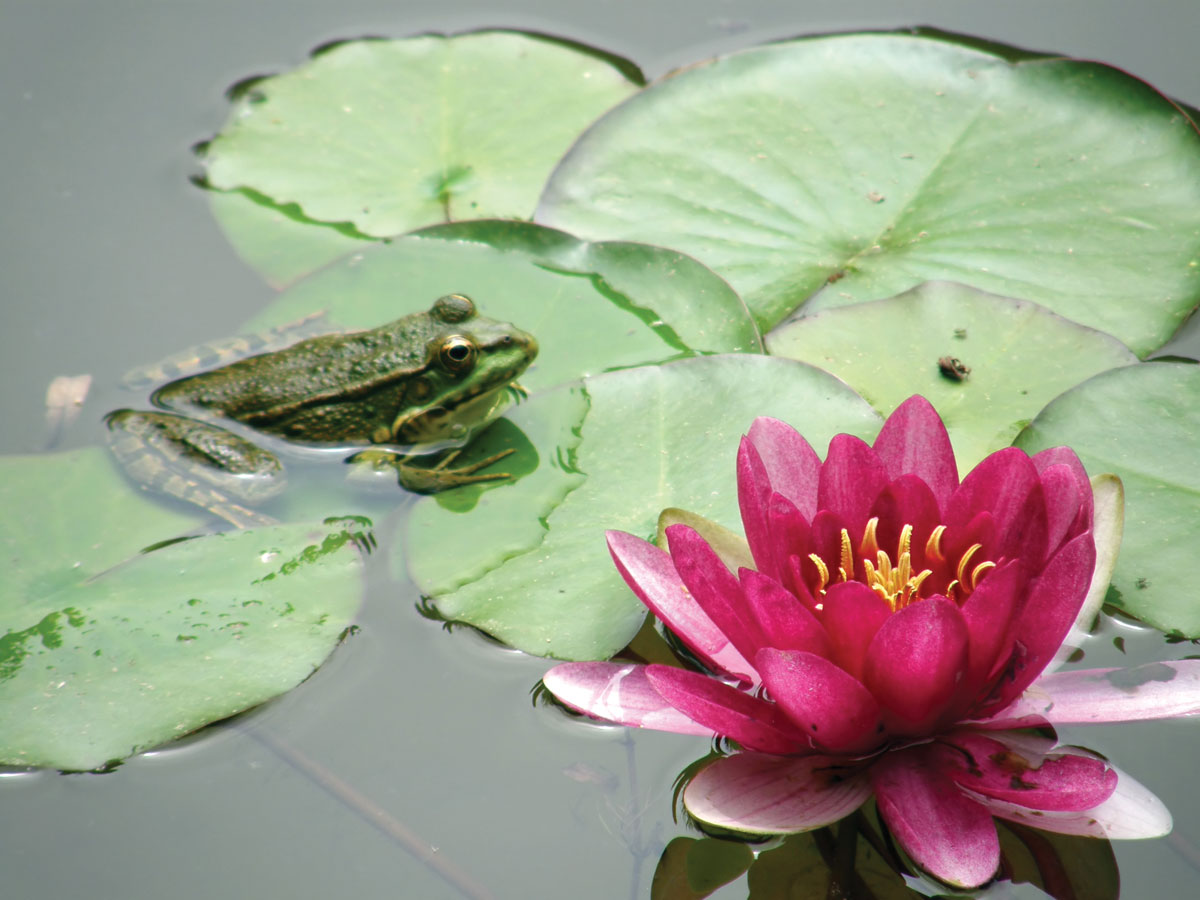According to the Garden Media Group, “A garden filled with amphibians indicates balance and a healthy ecosystem. An absence may indicate problems…”
Silence in a garden is not a good thing. That caution pertains to birds, bees and amphibians such as frogs and toads, which are disappearing at an alarming rate. It is estimated that since the ‘70s, more than 200 frog species have disappeared from the world. According to the International Union for Conservation of Nature, 1 in 3 of all amphibians are red-listed as being endangered.
What is causing their disappearance? Frog Watch USA and the National Wildlife Federation maintain that the destruction of habitats is central to the decline of amphibian life. Pesticide use, pollution, invasive species, increased UV radiation and climate change are also contributing factors.
Frogs and toads are important to the ecosystem as they provide effective and natural forms of pest control by imbibing mosquitoes, slugs, destructive beetles and other insects.
Welcoming Frogs to Your Backyard
Frogs, of course, love water. According to the Garden Media Group, which is based in Kennett Square, you can entice them to your backyard with a body of water that is devoid of fish. They prefer still water, so save the fountains, pumps and waterfalls for another pond. Refrain from cleaning the pond – debris and wayward insects provide food.
Those cute toad houses are actually more than a decorative element – they entice and provide frogs with shelter. You can be a good host by not allowing your dog or cat to explore the pond area.
Frogs view plant life as welcoming and protective. Plants such as ferns, milkweed and Joe Pye provide offspring with cover to safely exit the water. Marginal plants such as iris, lobelia and sedges provide cover for frogs as they enter/exit the water. Submerged plants such as water lilies, broad-leaf arrowhead and pickerelweed oxygenate the water.
It’s also critical that you don’t introduce non-native species of frogs and toads to your water garden. It could be illegal, plus the newcomers could prove to be invasive and destructive.






SHARE
PRINT